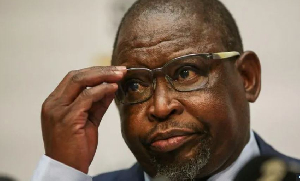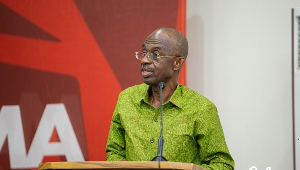Twifo Praso (C/R), Aug. 4, GNA - Twenty-eight school communities in the Twifo-Hemang-Lower Denkyira District have benefited from micro-grants to the tune of GH¢9,800 under the USAID Government Accountability Improves Trust Two (GAIT II) programme to implement School Performance Improvement Plans (SPIP) and produce basic teaching and learning materials.
Mr Samuel Agyeibie Kessie, the District Chief Executive (DCE) who announced this on Friday at a durbar to mark the exit of GAIT II programme from the district said the schools were also assisted with various modes of teaching and learning capabilities, including development and its implementation of SPIPs. He said the aim of the programme has been to support activities aimed at strengthening democratic and decentralized governance through increased community advocacy for quality education in the district. The DCE said the programme worked with three key partners, the district assembly, the district education directorate and the civic union, which comprises various civil society organizations in the district.
Mr. Kessie said the role of the programme had largely been to facilitate activities and processes; allowing the partners to decide on and implement programmes and activities provided they were within the domain of its mandate.
He said in relation to the District Assembly, GAIT II facilitated and supported financially activities relating to standard procedures that go to promote transparency, accountability, public involvement and participation in decision-making that enhanced democratic governance at the local level on sustainable basis. In relation to the education directorate, the DCE said it focused on promoting quality education through the active involvement of key stakeholders in education delivery, the district assembly, the education directorate, the Parent-Teacher Association/School Management Committee (PTA/SMC) and the communities. GAIT's relation with the civic union focused on educating, and sensitizing individuals and civil society organizations about their respective roles, duties and responsibilities as citizens and their active involvement and participation in decisions of government on issues affecting them and to partner and collaborate with the district assemblies, the district directorate of education and local community leaders on issues of service delivery and development and also assisting them in promoting their economic livelihood. Mr Kessie said in order to achieve the goals and objective of its partnership with stakeholders, GAIT II employed three main tools of capacity building, advocacy and micro finance to develop and enhance the skills and capabilities of stakeholders to enable them to be self-motivating and self-supporting.
He said over the three years of GAIT II's operation in the district, the district benefited in divers ways in such areas as social interactive enlightment, human resource development, financial support, skills enhancement, democratic governance, economic empowerment, among many others.
He said these social economic and political values transferred to individuals, groups and institutions have contributed tremendously in bringing the district to its present stage. Mr Kessie thanked the team members on GAIT II, past and present and acknowledged the presence and work of mentors like Mr Daniel Alimo and Mr. Alex Agblode and the committed leadership of the chief of the team, Mrs. Evelyn Arthur.
The DCE on behalf of the people in the district expressed gratitude to the programme which formally signify the end of their invaluable service and dedication to the district. Mr Lawrence D. Dolan, USAID/Ghana Mission Director said Ghana's democracy had been described as vibrant and a model that many countries in Africa could follow.
He said USAID/Ghana is proud to support GAIT II programme and this testified to the contribution that the US government has made to the growth of Ghana's democracy. Mr Dolan appealed to the district to sustain the gains under GAIT II, adding that, the true success of GAIT II would be measured by whether the high level of local government citizens interaction that began under GAIT II would continue after the project had ended.
General News of Monday, 4 August 2008
Source: GNA
















